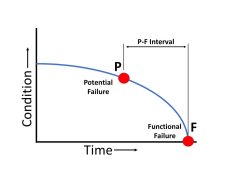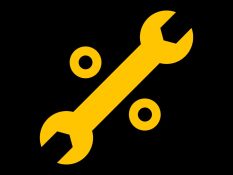The 8 Wastes of Lean Maintenance Management
Applying Lean Manufacturing (or Lean Production) Philosophy to Maintenance
The concept of “lean” was born in Japan in the 1960s and quickly spread to other countries. The lean production has been adopted by many different industries such as automotive, aerospace, electronics, and pharmaceuticals.
While the roots of “lean” are based in manufacturing and production (especially the automotive industry spearheaded by Toyota in Japan), today the concept has spread even into services industries (who don’t produce any goods at all).
Today’s article is based on applying the concept of wastes of lean manufacturing to maintenance and showing how maintenance departments in industries can utilize the principle of wastes in lean manufacturing to make maintenance more efficient.
Brief Overview of 8 Wastes of Lean Manufacturing
The very name of the concept i.e., “lean” hints towards how it is based around removing weight and burden.
Burden of what? - Burden of unnecessary actions that make a manufacturing process too heavy to move fast. Consequently, you waste more resources to make that heavy process work for producing output.
The lean manufacturing and lean management concept defines 8 wastes that, if removed, make a process lean and efficient. These include:
- Holding unnecessary inventory of products and raw materials that waste resources needed to keep and maintain them.
- Defects in manufactured products that waste the resources used to create it in the first place.
- Overproduction that produces more goods than what the market needs thereby wasting resources to handle and stock these extra products.
- Time and opportunity wasted by production manpower, machines and workstations waiting for work.
- Unutilized talent of team members that results in wasting resources for arranging external support when the same could’ve been done inhouse.
- Resources wasted on unnecessary transportation of material from outside the plant or within.
- Time and efforts wasted in excessive movement of labor inside the factory that could’ve been prevented by adopting a simpler plant layout.
- Money and time wasted on chasing perfection by extra-processing of products to increase quality beyond what is needed in the market.
The 8 Wastes of Lean Maintenance
Now that we’ve recalled the 8 wastes in lean manufacturing, let us see how it applies to maintenance.
Inventory
Just like it is wasteful in lean manufacturing to hold unnecessary raw materials in inventory, it is wasteful in maintenance to hold inventory of unnecessary spare parts, tools and consumables.
Stacking warehouses up with spare parts that may be used once in 10 years is not the best strategy. Instead, maintenance record and history keeping should be improved to get better in spare part forecasting or more responsive supply chains should be explored to reduce risk of stock out of a critical spare part.
The concept that keeping more and more spare parts for ensuring high uptime of all plant equipment is not consistent with the lean manufacturing concept.
Defects
Just like in lean manufacturing, defects reflect waste of resources that were used to create the defective product (that doesn’t sell) in the first place, a poorly conducted maintenance job also wastes the time and effort involved in doing it bad.
When a maintenance technician takes a machine out of production to undertake a corrective maintenance or repair task on it, he spends his time, his efforts and causes inconvenience in operations to fix the machine.
If the technician uses any substandard practice to just get the job over with, the issue will most likely pop out again later requiring maintenance again. A maintenance job not done right the first time will inevitably waste time in doing it the second time.
Overproduction
Just like it is a waste in lean manufacturing to produce more goods than needed by market, it is wasteful in lean maintenance management to unnecessarily increase frequency of maintenance actions.
The modern philosophy of maintenance namely “reliability engineering” challenges the popular philosophy that says that if you do more and more maintenance, it will decrease chances of breakdowns.
The modern philosophy of maintenance states that more and more maintenance is more likely to cause trouble than it is to give any advantage. Unnecessarily intruding in equipment to maintain them only increases probability of failure.
Therefore, in lean maintenance management, over-maintenance is a waste.
Waiting
Just like workers and machines sitting idle waiting for work is a waste in lean manufacturing, it is a waste in maintenance as well. If maintenance labor is waiting for tools, spare parts, consumables or any other supplies to begin their work, it is a waste.
A lean maintenance department has such processes and workflows in place so as to minimize the idle time of workers. The whole concept of planning and scheduling work in advance is based on minimizing the idle time of maintenance labor.
Unutilized Talent
If maintenance supervisors and technicians are able to understand the intricacies of a recurring problem in an industrial plant but the management still hires a consultant to resolve it, isn’t it waste of the talents of your inhouse maintenance team?
There are many problems for which the inhouse maintenance team has a solution, however, the same is not utilized and outside support is taken which is wasteful of the available talents.
If a maintenance supervisor is skilled enough to become a planner but instead of promoting him, you do all the work to hire a new person, isn’t it a waste of efforts?
In view of above, the unutilized talents of maintenance team members is a waste for lean maintenance.
Movement
Just like a poor production layout that causes unnecessary movement of men and material is a waste in lean manufacturing, it is also a waste in maintenance.
Just like idle time of workers and machines is needed to be minimized, their movement also needs to be cut down. There is a reason why there is a concept of parts kitting in maintenance departments. It involves putting the tools and parts needed for a job at the job place so that maintenance technicians don’t have to move to get it.
A well-designed workshop layout will also have minimum movement of men and machines to save time and effort.
Transportation
There is a reason why there is a concept of spare parts store and tool room inside the factory and not in some remote warehouse. The concept is to provide the required supplies at the point of use.
Just like unnecessary transportation of raw material outside or inside a plant is a waste in lean manufacturing, unnecessary transportation of spare parts, tools, consumables and supplies is a waste in lean maintenance management.
Extra-processing
Remember we discussed earlier how increasing frequency of maintenance is not a great thing in modern maintenance philosophy?
In a similar way, doing maintenance at a deeper level unnecessary falls under extra-processing and it is a waste. If an electric motor manufacturer hasn’t asked you to open it up every year, don’t do it. Just take its current readings but don’t go unnecessarily deep into its maintenance.
In manufacturing, extra-processing is making product of a higher quality than needed (which is a waste of efforts and resources). In maintenance, trying to clean something that doesn’t need to be cleaned is wasteful. Clean it if it helps otherwise leave it as it is.
Final Word
In short, the lean manufacturing philosophy is perfectly applicable on maintenance management. The 8 wastes of lean manufacturing, when applied on maintenance, reveal how we can make maintenance lean by removing wastes from maintenance processes.
References & Further Reading
If you want to get further knowledge about this subject, we recommend you consult the following useful resources:
- Lean Maintenance Reduce Costs, Improve Quality, and Increase Market Share by Ricky Smith and Bruce Hawkins, eBook ISBN: 9780080478906 (Link).
- Lean Maintenance Repair and Overhaul: Changing the Way You Do Business by Srinivasan, Mandyam M., Melissa R. Bowers and Kenneth C. Gilbert, ISBN: 9780071789943 (Link).
Other Articles You May Like

brizy_dc_post_title
Learn about Autonomous Maintenance - part of Total Productive Maintenance that empowers machine operators in basic maintenance tasks.

brizy_dc_post_title
Learn what is RAMS - acronym of Reliability, Availability, Maintainability & Safety/Supportability - in industrial maintenance.

brizy_dc_post_title
We explain what is the supposed role of Maintenance Planning Department in industry. We clear misconceptions and give do's and don'ts.

brizy_dc_post_title
Explaining 6 industrial maintenance types: Preventive, Reactive, Corrective, Predictive, Proactive and Reliability Centered Maintenance.

brizy_dc_post_title
Practical aspects of PF Curve and PF Interval in maintenance & reliability explained. Learn what's the most important question in PF interval?

brizy_dc_post_title
The practical application of ABC classification of inventory for maintenance spare parts with examples from different industries.

brizy_dc_post_title
We explain the concept of Inherent Reliability - A metric used in industrial maintenance and reliability management.

brizy_dc_post_title
Intuitive explanation of Achieved Availability - Metric used in Industrial Maintenance & Reliability Management.

brizy_dc_post_title
Explaining in simple English the term Mean Time To Repair or Replace (MTTR) used in maintenance management.

brizy_dc_post_title
We explain the terms Mean Time Between Failures (MTBF) and Mean Time To Failure (MTTF) in simple and practical language.

brizy_dc_post_title
We give a detailed example of calculating Overall Equipment Effectiveness (OEE) for HVAC equipment (in a story telling style).

brizy_dc_post_title
Explaining the 8 wastes of lean manufacturing (or lean production) philosophy that are applicable on maintenance management.

brizy_dc_post_title
Intuitive explanation of the difference between Total Effective Equipment Performance (TEEP) & Overall Equipment Effectiveness (OEE).

brizy_dc_post_title
We explain in layman terms what is Overall Equipment Effectiveness (OEE) - a metric maintenance teams aim to maximize in industry.

brizy_dc_post_title
We explain a useful metric that is used by maintenance managers to determine efficiency of their maintenance workforce.

brizy_dc_post_title
We explain the maintenance work order system (or work management system) used by maintenance departments in simple words.